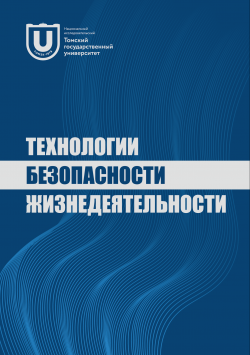Study of the evolution of the surface concentration of traces of high energy substances in fingerprints by polarization macrophotographic and lidar methods
The results of the study of the evolution of the surface concentration of cyclotrimethylenetrinitramine (RDX) traces in fingerprints by the polarization macrophotographic method and by the method of laser fragmentation/laser-induced fluorescence are presented. A technique for estimating the surface density of RDX traces in fingerprints based on a pixel-by-pixel analysis of macrophotographs taken in polarized light is described. Experimental data on remote detection of RDX particles in fingerprints are presented. Comparison of the data of direct measurements of the total area of the trace with the data of the responses of the LF/LIF lidar detector gives good conformability. The authors declare no conflicts of interests.
Keywords
high energy substances,
cyclotrimethylenetrinitramine,
traces,
macro photography,
laser fragmentation,
laser-induced fluorescenceAuthors
| Bobrovnikov Sergei M. | Tomsk State University; V.E. Zuev Institute of Atmospheric Optics SB RAS | bsm@iao.ru |
| Gorlov Evgeny V. | Tomsk State University; V.E. Zuev Institute of Atmospheric Optics SB RAS | gorlov_e@mail.ru |
| Zharkov Viktor I. | V.E. Zuev Institute of Atmospheric Optics SB RAS | zharkov@iao.ru |
| Murashko Sergei N. | Tomsk State University; V.E. Zuev Institute of Atmospheric Optics SB RAS | msn_17@mail.ru |
| Panchenko Yury N. | Tomsk State University; Institute of High Current Electronics SB RAS | yu.n.panchenko@mail.ru |
| Aksenov Valery A. | Siberian branch of the Scientific and Production Association "Special Equipment and Telecoms" of the Ministry of the Internal Affairs of the Russian Federation | duploduba@mail.ru |
| Kikhtenko Andrey V. | Trofimuk Institute of Petroleum Geology and Geophysics SB RAS | kikht@mail.ru |
| Tivileva Maria I. | Siberian branch of the Scientific and Production Association "Special Equipment and Telecoms" of the Ministry of the Internal Affairs of the Russian Federation | mtivileva@yandex.ru |
Всего: 8
References
Rodgers M.O., Davis D.D. A UV-Photofragmentation/Laser-Induced Fluorescence Sensor for the Atmospheric Detection of HONO // Environmental science & technology. 1989. V. 23 (9). P. 1106-1112.
Galloway D.B., Bartz J.A., Huey L.G., Crim F.F. Pathways and kinetic energy disposal in the photodissociation of nitrobenzene // The Journal of chemical physics. 1993. V. 98 (3). P. 2107-2114.
Lemire G. W., Simeonsson J.B., Sausa R.C. Monitoring of vapor-phase nitro compounds using 226-nm radiation: fragmentation with subsequent NO resonance-enhanced multiphoton ionization detection // Analytical Chemistry. 1993. V. 65 (5). P. 529-533.
Galloway D.B., Glenewinkel-Meyer T., Bartz J.A., Huey L.G., Crim F.F. The Kinetic and Internal Energy of NO from the Photodissociation of Nitrobenzene // The Journal of chemical physics. 1994. V. 100 (3). P. 1946-1952.
Wu D.D., Singh J.P., Yueh F.Y., Monts D.L. 2,4,6-Trinitrotoluene detection by laser-photofragmentation-laser-induced fluorescence // Applied Optics. 1996. V. 35 (21). P. 3998-4003.
Simeonsson J.B., Sausa R.C. A critical review of laser photofragmentation/fragment detection techniques for gas phase chemical analysis // Applied Spectroscopy Reviews. 1996. V. 31 (1). P. 1-72.
Swayambunathan V., Singh G., Sausa R.C. Laser photofragmentation-fragment detection and pyrolysis-laser-induced fluorescence studies on energetic materials // Applied optics. 1999. V. 38 (30). P. 6447-6454.
Daugey N., Shu J., Bar I., Rosenwaks S. Nitrobenzene detection by one-color laser photolysis/laser induced fluorescence of NO (v = 0-3) // Applied spectroscopy. 1999. V. 53 (1). P. 57-64.
Shu J., Bar I., Rosenwaks S. Dinitrobenzene Detection by Use of One-color Laser Photolysis and Laser-Induced Fluorescence of Vibrationally Excited NO // Applied optics. 1999. V. 38 (21). P. 4705-4710.
Shu J., Bar I., Rosenwaks S. NO and PO photofragments as trace analyte indicators of nitrocompounds and organophosphonates // Applied Physics B. 2000. V. 71 (5). P. 665-672.
Shu J., Bar I., Rosenwaks S. The use of rovibrationally excited NO photofragments as trace nitrocompounds indicators // Applied Physics B. 2000. V. 70(4). P. 621-625.
Arusi-Parpar T., Heflinger D., Lavi R. Photodissociation Followed by Laser-Induced Fluorescence at Atmospheric Pressure and 24°C: A Unique Scheme for Remote Detection of Explosives // Applied optics. 2001. V. 40 (36). P. 6677-6681.
Heflinger D., Arusi-Parpar T., Ron Y., Lavi R. Application of a unique scheme for remote detection of explosives // Optics Communications. 2002. V. 204 (1-6). P. 327-331.
Wynn C.M., Palmacci S., Kunz R.R., RothschildM. Noncontact detection of homemade explosive constituents via photodissociation followed by laser-induced fluorescence // Optics express. 2010. V. 18 (6). P. 5399-5406.
Wynn C.M., Palmacci S., Kunz R.R., Aernecke M. Noncontact optical detection of explosive particles via photodissociation followed by laser-induced fluorescence // Optics express. 2011. V. 19 (19). P. 18671-18677.
Bobrovnikov S.M., Gorlov E.V. Lidar method for remote detection of vapors of explosives in the atmosphere // Atmospheric and Oceanic Optics. 2011. V. 24 (3). P. 235-241.
Bobrovnikov S.M., Vorozhtsov A.B., Gorlov E. V., Zharkov V.I., Maksimov E.M., Panchenko Y.N., Sakovich G. V. Lidar detection of explosive vapors in the atmosphere // Russian Physics Journal. 2016. V. 58(9). P. 1217-1225.
Verkouteren J.R., Coleman J.L., Cho I. Automated Mapping of Explosives Particles in Composition C-4 Fingerprints // Journal of Forensic Sciences. 2010. V. 55(2). P. 334-340.
Panchenko Y., Puchikin A., Yampolskaya S., Bobrovnikov S., Gorlov E., Zharkov V. Narrowband KrF Laser for Lidar Systems // IEEE Journal of Quantum Electronics. 2021. V. 57 (2). P. 1-5.

